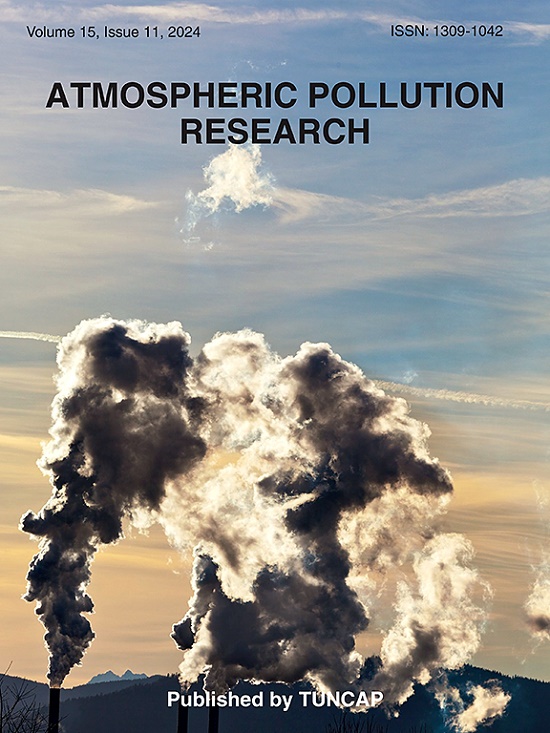Ability of typical greening tree species to purify NO2 under different environmental factors
IF 3.9
3区 环境科学与生态学
Q2 ENVIRONMENTAL SCIENCES
引用次数: 0
Abstract
Trees can uptake nitrogen dioxide(NO2) and purify atmosphere, but the complex variation of environmental factors affects the ability of trees to purify NO2. In this study, we conducted a one-time fumigation experiment on four typical greening tree species in China, including Japanese pagoda tree (Styphnolobium japonicum), Ginkgo (Ginkgo biloba), Manchurian red pine (Pinus tabuliformis), and Bunge's pine (Pinus bungeana), to analyze the impact of environmental factors on the ability of the trees to remove NO2 from the air by quantifying their performance under different conditions of temperature, relative humidity, and wind speed. The results showed the following: (1) Broadleaf trees were more effective at purification compared with coniferous trees. (2) With the increase of temperature, the average purification rate of each tree species showed a decreasing and then increasing trend; except Bunge's pine, the purification amount per unit leaf area of each tree species showed an increasing and then decreasing trend. (3) With increasing relative humidity, the purification of NO2 per unit leaf area in coniferous trees increased, while the trend in broadleaf trees decreased and then increased; the average purification rate of all the tree species, except Ginkgo, also decreased and then increased. (4) Temperature inhibited plant NO2 purification capacity, relative humidity promoted plant NO2 purification capacity, and wind speed had less ability to influence. (5) Multiple linear regression equations were successfully established to predict the ability of trees to purify NO2 under different environmental factors. The study provides an important reference to purify atmosphere.

求助全文
约1分钟内获得全文
求助全文
来源期刊

Atmospheric Pollution Research
ENVIRONMENTAL SCIENCES-
CiteScore
8.30
自引率
6.70%
发文量
256
审稿时长
36 days
期刊介绍:
Atmospheric Pollution Research (APR) is an international journal designed for the publication of articles on air pollution. Papers should present novel experimental results, theory and modeling of air pollution on local, regional, or global scales. Areas covered are research on inorganic, organic, and persistent organic air pollutants, air quality monitoring, air quality management, atmospheric dispersion and transport, air-surface (soil, water, and vegetation) exchange of pollutants, dry and wet deposition, indoor air quality, exposure assessment, health effects, satellite measurements, natural emissions, atmospheric chemistry, greenhouse gases, and effects on climate change.
 求助内容:
求助内容: 应助结果提醒方式:
应助结果提醒方式:


